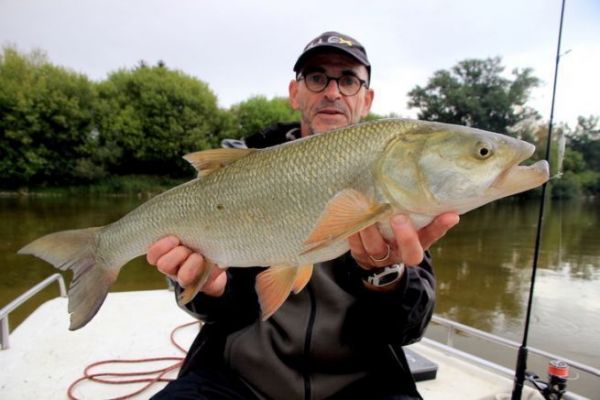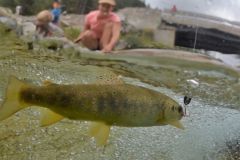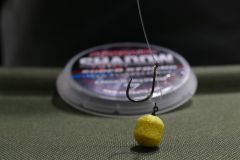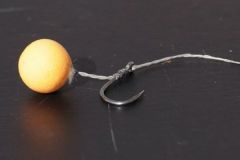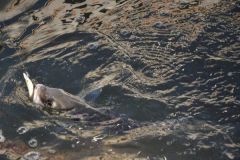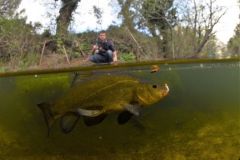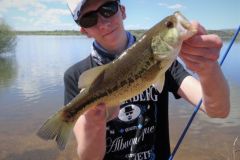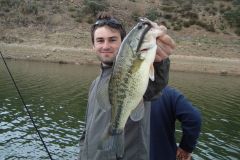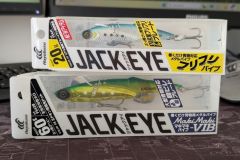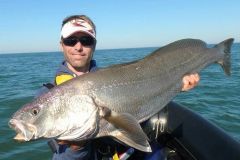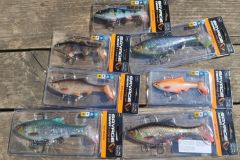Morphological characteristics
The asp (Aspius aspius) is a cyprinid with a massive and elongated body provided with small scales. It has small eyes and an upward facing mouth characteristic of fish feeding near the surface. Its powerful mouth is distinguished by a prominent lower jaw making the asp a prognathic fish like the black bass or the pike for example. Its pectoral fins are wide, triangular and protruding, reminding us of the sails of a sailboat. Also, its wide and powerful caudal fin is quite characteristic.
As far as coloration is concerned, the asp has light silver (or even golden) sides, a greenish back and a white belly. In terms of size, in France the population continues to develop and it is no longer rare to come across, in the sectors where it is well established, fish of 70 cm and more, knowing that the asp can exceed one meter and weigh more than 10 kg, which makes it one of the largest cyprinids in Europe!
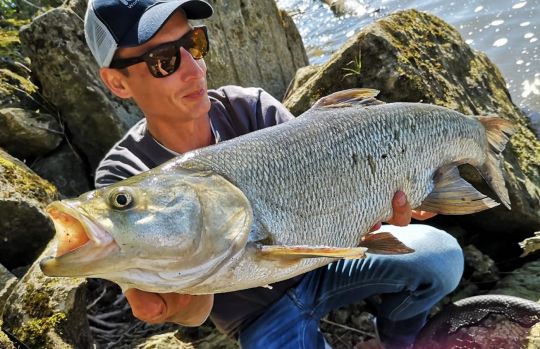
Colonization and distribution in France
Like carp, pike-perch, ide melanote, catfish or goby, the asp is a fish originating from Eastern Europe, and more precisely from the Danube basin. The first reports of asp in France date back to more than thirty years ago. It arrived massively in France through the Danube-Main-Rhine canal.
Initially very present in eastern France, it then colonized other river basins. It can be found in large numbers along a large part of the Loire and some of its tributaries and more and more catches are being recorded in the Seine, particularly downstream from Paris to Rouen.
Habits, reproduction and habitat
The asp is a gregarious fish (fish living in school) but becomes more and more solitary at the adulthood. The asp is sexually mature at about 5 years old, it will be then fish of about 55 cm for 2 to 3 kg, and its reproduction will take place in spring, in a water included between 9 and 14°C and will be distributed between March and June. The fish join then the headwaters of the rivers in search of shallow zones with strong current and gravelly funds. The eggs, deposited on the substrate by the female and fertilized by the males, incubate for about 15 days until the appearance of the fry.
Moreover, if the asp is particularly fond of the current, it is easily found in the barbel areas (slow to moderately running rivers) and also adapts very well to life in lakes. Also, it supports well the brackish water.
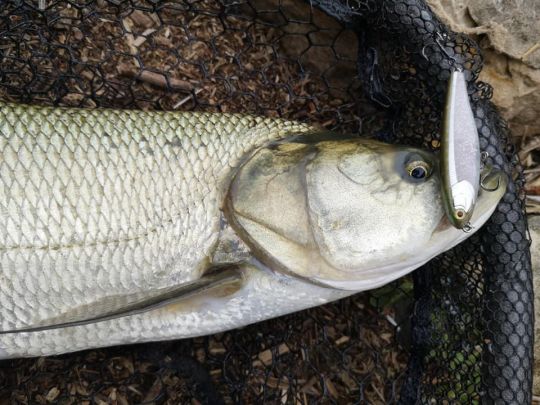
Diet
The asp is the only cyprinid present in France with an exclusively piscivorous diet. If other cyprinids like the ide melanote or the chub (or even the roach, the rotengle or the carp) have carnivorous tendencies more and more marked with age, they remain nevertheless omnivorous.
In the case of the asp, the fry start to feed on small fish as early as 3 months. Its mouth oriented upwards indicates that it is a fish which tends to feed close to the surface. It will use the surface of the water as a wall against which it will press its prey. If it feeds on small white fish (bleak, roach, wandering fish, etc.) close to the surface most of the time, at the end of the season it will not hesitate to literally "hit" other fish on the bottom (gudgeon in the Loire or gobies in the rivers of eastern France). It is not uncommon to catch fish with a damaged lower jaw from hitting the bottom.

The search for the asp is demanding, can be frustrating but exciting at the same time. Once you have tasted the fishing of these silver arrows, it becomes very difficult to do without them!

 /
/ 